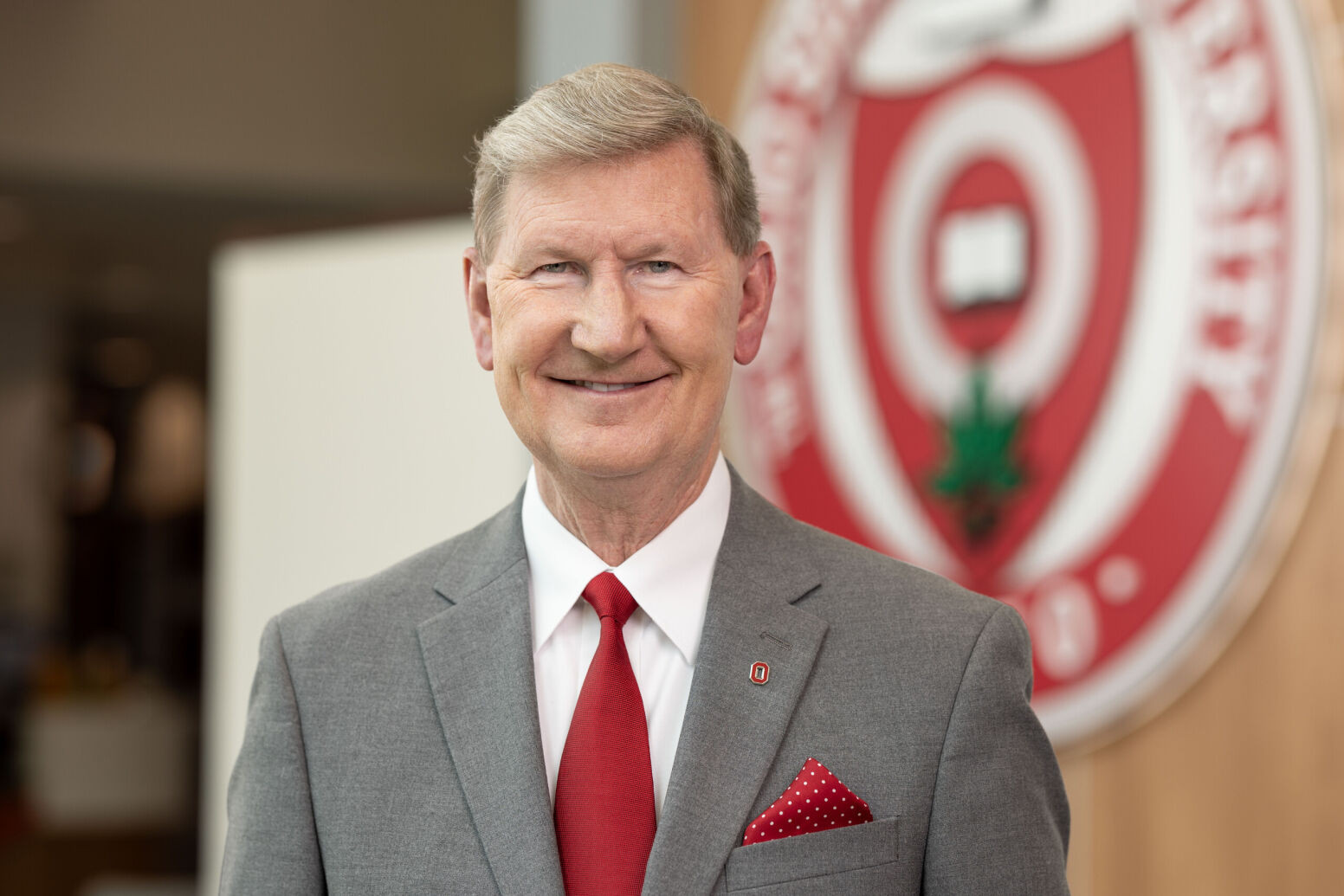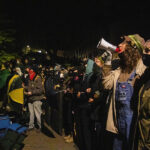Harvey J. Graff
Posted June 10, 2024

OFTEN FORGOTTEN TODAY is that the massive anti-war protests of 1968-70 grew from foundations of more than a decade. Today’s actions began almost spontaneously with some pre-pandemic roots in Black Lives Matter and Diversity-Equity-and-Inclusion movement.
An appearance of a new anti-Gaza War and innocent Palestinian lives movement is just emerging with a “campus encampment movement” in the wake of Columbia’s violent New York City. Arrests in total have passed 3200. Administration ordered campus and local police, state patrols and troopers, and in Texas the National Guard riot against overwhelmingly peaceful students. USC, Columbia, UCLA, Indiana, and Michigan, among others, have been cleared multiple times.
In the 1960s, students were better organized; university administrators were not. When my fellow protesters and I literally tore up Sheridan Road/US 42 in Evanston, Illinois, the day after the 1970 Kent State massacre, no police intervened.
In 2024, administrators are more organized. Without historical precedent, this is primarily at the orders of real “outside agitators” and “external influencers,” a curious assemblage beginning with large donors and other members of Boards of Trustees. They began their assault on Penn’s new female president Elizabeth Magill) in July 2023 when she refused to cancel an on-campus literary festival that included Palestinian artists.
Harvard donor Bill Ackman added the false accusation of “plagiarism” to “antisemitism” in his campaign against Harvard’s Claudine Gay, the first Black woman president, less than six months in office. Trump-sponsored, rightwing popularizer Christopher Rufo was a loud, connective thread. (As it happens, Ackman’s wife lost her MIT Ph.D. because of actual documented plagiarism.)
This developing campaign rapidly accelerated step by step after October 7, 2023. The coalition of donors, trustees and organizations works in conjunction with the rightwing Republican dominated House of Representatives, most actively its Committee on Education and Work. That activist body is led by chair Virginia Foxx and Harvard Law School graduate Elise Stefanik (R-NY) — who was removed from Harvard boards because of her opposition to the certified results of the 2020 presidential election.
Criticism of Israel’s government-commanded mass murders of at least 36,000 Palestinians, at least one-half of whom are children, and of the Israel Defense Force actions does not constitute antisemitism, opposition to the state of Israeli, or disrespect for Jews and Israelis in general.
Patterns of anti-war protests and responses are clear. From east to west to north and south, rallies of several hundred students, first with symbolic statements and banners, quickly moving to “encampments” almost completely peaceful and legal quickly led to university presidents’ demands for combinations of campus security, local police, state police and troopers, and in Texas the National Guard violent, physical overreactions and clearances.
In some cases such as USC, Columbia, UCLA, Indiana, Michigan, Alabama and Ohio State, this has taken place at least two and three times.
The Ohio State Case
Much is written about violent clearances of student protesters and encampments at Columbia and USC, gassing protesters at Emory, and police failure to stop a pro-Israel mob from attacking peaceful protesters at UCLA.
Too little is presented about the smaller episodes of university presidents assaulting their own tuition-paying students. I turn to my last employer, The Ohio State University, in whose neighboring University District, my wife and I have lived for twenty years (and which we plan to leave shortly for a genuine city in a blue state.)
Ohio State is a much too-large, poorly managed, uncoordinated land grant university, known best for its football teams. During my two decades closely observing the university, the power of the largest donors especially the Wexners and Schottensteins, the conservative business and technology class Board of Trustees, and the rightwing state of Ohio government dramatically increased.
OSU’s new president took office on January 1, 2024. Ted Carter, who hold only a B.S., is a retired rear admiral, a former head of the military Naval Academy, and very briefly chancellor of the University of Nebraska System, whose four campuses together are smaller than OSU’s main campus. He left both with major problems.
Almost completely unfamiliar with academic teaching, research, and the actual administrative of a very large university. He was selected by an executive search firm. He is trained to follow his superiors’ orders. He proudly declares that he will not lead.
Carter is fond of declaring, especially as a former military officer, he is a “fan” of the First Amendment. He begins many sentences with such statements, almost always linked to his naval career. But he immediately qualifies his commitment in the next pronouncement. In one public venue, he invited three protesting students to speak, then cut them off after one minute. The three received formal notices about “misconduct” within a few hours.
As it has for years now, the OSU administration continued to interfere illegally when Undergraduate Student Government once again attempted to pass a symbolic BDS (Boycott, Divest, Sanction) motion this spring.
The students were blocked on the dubious and irrelevant grounds that the State of Ohio forbids public institutions from divesting. The law does not actually state that; it prohibits “discrimination.” Regardless, it has no relevance to a student government resolution.
During two protests of relatively few students on different parts of the public university campus grounds, first two students were arrested for alleged noise violations — for which there are no explicit standards or measures — and then three more for disorder and disruption. None of them explicitly violated a single specific law or code of conduct. In fact, they selected locations for moderate-sized actions that did not violate anyone’s legal rights or inconvenience others. They avoided the center of campus, the historic Oval.
That does not matter in 2024. The president follows the orders of outside agitators. Carter and the university spokesperson compete for making the most contradictory declarations with no content.
Armed Threats, Mass Arrests
Matters came to a head on the evening of April 25. Several hundred protesters gathered on the South Oval, a separate site from the main Oval that is surrounded by classroom, administration, and main library buildings and therefore less “disruptive.”
The president responded almost immediately by dispatching campus security and requesting Ohio State Troopers come to the site. Together, they dramatically overreacted. (The absence of the Columbus Police Department remains a topic of disagreement.)
Completely unnecessarily, State Troopers with loaded rifles lined the roof of the Student Union across the street and somewhat north of the protest site. OSU denied this visible presence. Before long, a line of armed officers in riot gear formed in front of the peacefully protesting, unthreatening students.
Suddenly, the armed officers stormed the group. Thirty-six were arrested, the largest numbers young women including both Jewish and Palestinian Americans. According to multiple accounts, women were strip-searched, hijabs were violently torn off heads, Muslims were denied the right to pray at their customary times, and both Jews and Muslim were not provided with Kosher or Hallal foods.
Carter issued his longest, most inaccurate, and most contradictory statement, prepared by the Department of Marketing and Communication. OSU circulated a four-page repetitive release; the local Columbus Dispatch published a short form as an extraordinarily long “letter to the editor” on May 1, six days after the violation of multiple student rights.
In his familiar reprise, he begins, “Listening to the feedback from our community over the last several days, I want to set the record straight regarding the events that took place on the South Oval on April 25.” He then does just the opposite:
“I value and welcome free speech. I have spoken to this since I day I arrived here at Ohio State. As many of you know, I wore the cloth of our nation for 38 years to support and defend these rights.
Contrary to all known facts including video and audio evidence, Carter continue, confusing student actions and violent response:
“What occurred on our campus on April 25 was not about limiting free speech. It was an intentional violation of university space rules that exist so that teaching, learning, research, service and patient care can occur on our campuses without interruption.”
Of course, none of these were interrupted.
Following the national narrative of grounds for suppressing student rights, Carter drones on
“Sadly, in recent days, I have watched significant safety issues be created by encampments on other campuses across our nation. These situations have caused in-person learning and commencement ceremonies to be canceled. Ohio State’s campus will not be overtaken in this manner.”
There were no “significant safety issues” at OSU. Nothing was canceled. Most importantly, 300 students (of 60,000) cannot “overtake” a huge campus. That is impossible.
Carter continued counter-factually, dishonestly, and contradictorily for pages. But the facts of needless, violent action against the university’s own students’ bodies, human and legal rights remain. No amount of marketing verbiage can alter that fundamental fact.
State and national elected officials join in threatening all academic freedoms. The Board of Trustees and state governor rushed to support Carter. The anti-Constitutional Ohio Attorney General Yo Yost now threatens student protest with felony charges — for supposedly violating a 1953 anti-mask or “anti-disguise” state law aimed at Ku Klux Klan public actions, of course irrelevant to the present situation.
Although this chapter is unfinished, I stop here. We could call this a “dangling conversation.” Instead, I declare it a “strangling conversation” about civil, human, and Constitutional rights —about the bases of education, teaching and learning themselves. A non-academic president cannot recognize a “teachable moment” or seize an opportunity for meaningful self-learning, let alone teaching others.
Harvey J. Graff is Professor Emeritus of English and History, inaugural Ohio Eminent Scholar in Literacy Studies, and Academy Professor, Ohio State University.


Leave a Reply